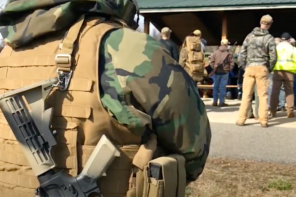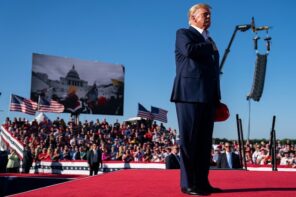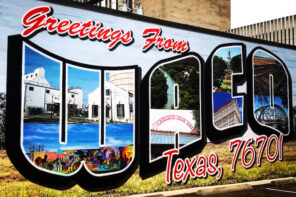Often a conflict between a religious group and the civil authorities results in a violent outcome. In 1992 and 1993 two standoffs ended in multiple deaths. The Ruby Ridge episode and the Waco incident reverberated in the anti-government militia movement and in 1995 contributed to the worst act of domestic terrorism since Harper’s Ferry, when Tim McVeigh carried out a previous plan by the Covenant, Sword, and Arm of the Lord to blow up the Murrah Federal Building in Oklahoma City.
In other cases violence is avoided. The Garland Texas Police Department allowed a scholar of religion to advise them that the Chen Tao movement would not commit collective suicide once the date of their apocalypse, March 31, 1998, had passed without incident. In 1996 the FBI gave negotiators the authority to prolong the confrontation with an armed group in Jordan, Montana, until it was defused by intermediaries. Both resolutions advanced the government’s understanding that each group has specific ultimate concerns, myths, forms of enactment, and languages that require expert decoding while the clock is ticking.
The latest religious standoff occurred July 21, 2019 at the foot of Mauna Kea, a mountain held sacred by Hawaiian sovereigntists on the island of Hawaii. The mountain’s protectors (kia’i) blocked the road to the construction site of the Thirty Meter Telescope (TMT). Their legal suits against the project had finally ended and the court had allowed construction to proceed. The governor, David Ige, met the protectors with a police presence called from several of the islands, while the kia’i adhered to their praxis of kapu aloha, or peaceful resistance. Hawaiians who favored the TMT project staged anemic counter protests in Honolulu, but were loathe to voice their opposition for fear it would tear families (ohana) apart. Aloha and ohana are the bedrock cultural values of the Hawaiian population.
After a tense nine days, during which the governor issued an emergency decree and the elders (kapuna) at the site were arrested, the government stood down, and the international consortium of scientists voted to delay construction for two years. This extraordinary outcome is most likely due to the group’s commitment to non-violence; collaboration with the Lakota (Wounded Knee) in developing an organized plan for peaceful protest; and the government’s commitment to take the time to address the specific grievances of the protectors over a process that had excluded their religious concerns.
What did not happen contributed as well. The group was not armed; the lieutenant governor and the mayor of Hawaii Island did not support the emergency decree or the arrests; and the international consortium agreed to a delay. Overarching cultural values, aloha and ohana, united all Hawaiians.
The protesters have now allowed workers to pass through their blockade of the main road up the mountain to service the thirteen telescopes whose operation was interrupted for four weeks. For now, the outcome remains unknown. But what the Mauna Kea conflict reveals, perhaps, is that bringing all parties to the table, committing to an open time frame, and decoding and acknowledging the differing worldviews, may allow them to discern a path forward.




